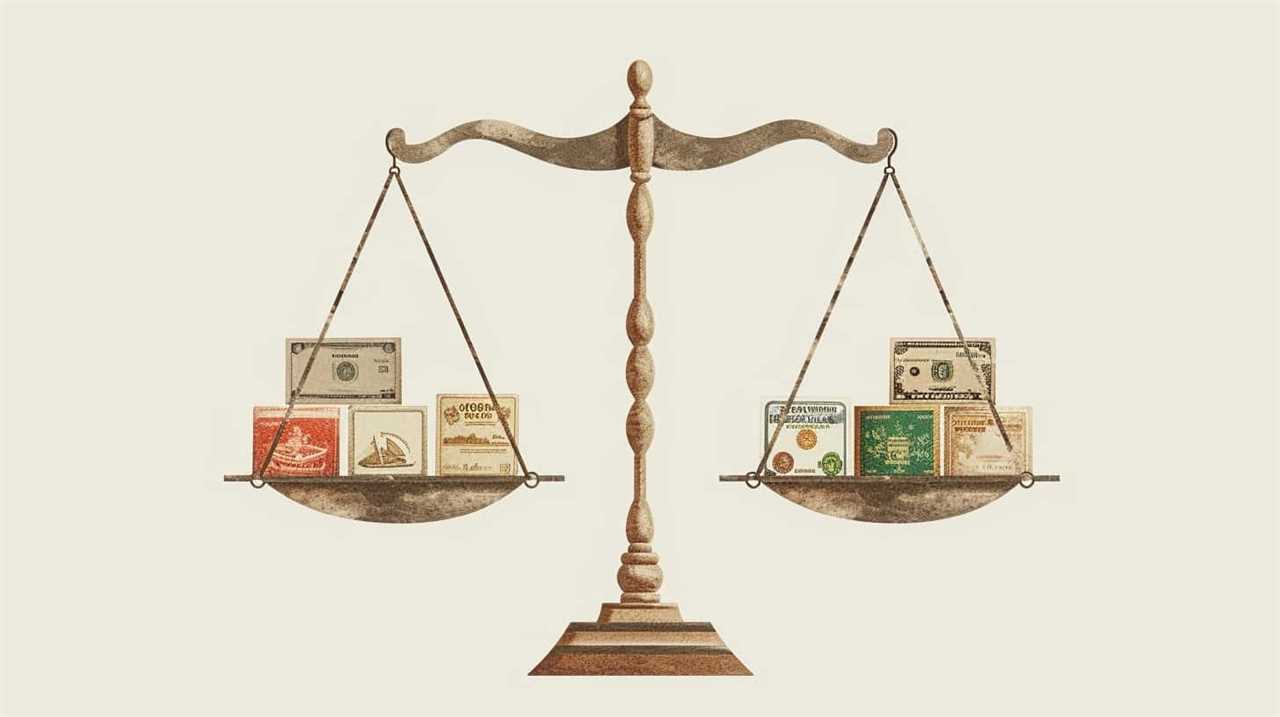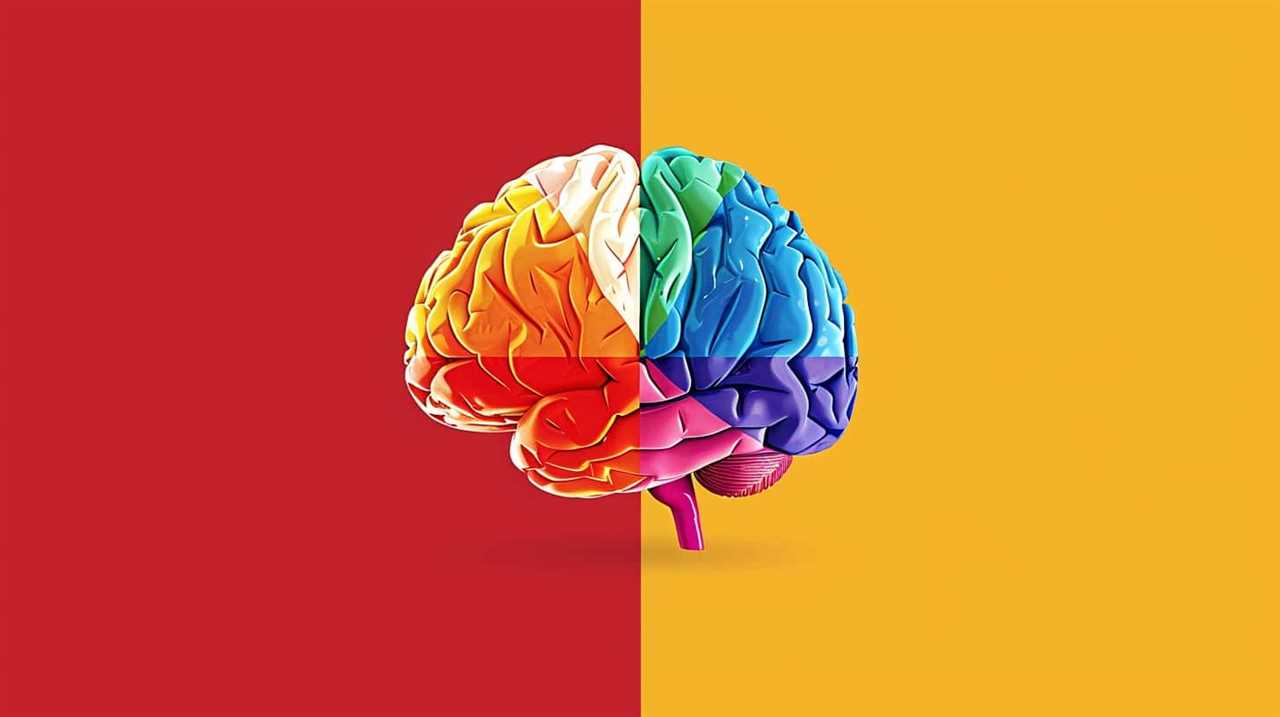As forward-thinking individuals, we set out on a quest to comprehend the effects of Keynesian policy on the current economy.
Did you know that Keynesian economics, developed by John Maynard Keynes, influenced economic policies during the Great Depression?
With its focus on government intervention and fiscal stimulus, Keynesian policy has had a profound effect on employment, economic growth, and business cycles.
By exploring the historical context, underlying principles, and successful case studies, we aim to navigate the complexities of this economic theory and its relevance in our ever-evolving global economy.

Join us as we unravel the potential challenges and future prospects of Keynesian economics, armed with the knowledge and understanding to shape a better economic landscape.
Key Takeaways
- Keynesian economics emerged as a response to the challenges faced during the Great Depression and influenced post-World War II policy making.
- Keynesian economics emphasizes government intervention through fiscal policies to stimulate aggregate demand and combat unemployment.
- Increased government spending, tax cuts, monetary policy easing, infrastructure projects, and cash transfers are tools used to achieve economic stimulus effects.
- Keynesian policies directly impact job creation and unemployment rates, but may not address underlying structural issues contributing to income inequality.
Historical Context of Keynesian Economics
In examining the historical context of Keynesian economics, we find that it emerged as a response to the economic challenges faced during the Great Depression. The origin of Keynesian economic theory can be traced back to the work of British economist John Maynard Keynes in the 1930s. Keynes believed that government intervention in the economy was necessary to stimulate aggregate demand and combat unemployment during times of economic downturn.
Keynesian economics had a significant impact on policy making, particularly in the post-World War II era. It influenced the development of fiscal and monetary policies aimed at stabilizing the economy and promoting full employment. One of the key tenets of Keynesian economics is the idea that government spending can help stimulate economic growth, especially when private sector demand is weak. This concept led to the implementation of expansionary fiscal policies, such as increased government spending and tax cuts, during recessions.
Furthermore, Keynesian economics emphasized the role of monetary policy in managing the economy. Central banks were encouraged to use interest rate adjustments and open market operations to control the money supply and influence borrowing costs. This approach aimed to influence consumer and business spending, as well as investment decisions.

The Underlying Principles of Keynesian Economics
The underlying principles of Keynesian economics are centered around the concepts of economic stimulus effects and demand-side fiscal policies.
Keynesian economics suggests that during periods of economic downturn, government intervention through fiscal policies such as increased government spending or tax cuts can stimulate aggregate demand, leading to economic growth.
This approach emphasizes the importance of addressing short-term economic fluctuations through active government intervention rather than relying solely on market forces.
Economic Stimulus Effects
Our analysis of Keynesian economics focuses on the underlying principles and effects of economic stimulus. When implemented effectively, economic stimulus can have a significant impact on consumer behavior and overall economic growth. To better understand the effects of economic stimulus, let’s take a look at the following table:

| Economic Stimulus Effects | Impact on Consumer Behavior |
|---|---|
| Increased government spending | Consumers may feel more confident and spend more, leading to increased demand and economic growth. |
| Tax cuts | Consumers may have more disposable income, which can lead to increased spending and stimulate economic activity. |
| Monetary policy easing | Lower interest rates can encourage borrowing and investment, which can boost consumer spending and economic growth. |
| Infrastructure projects | Increased infrastructure spending can create jobs and boost consumer confidence, spurring economic growth. |
| Cash transfers to individuals | Direct cash transfers can provide immediate relief to consumers, increasing spending and stimulating economic activity. |
Demand-Side Fiscal Policies
To understand the underlying principles of Keynesian economics, we can analyze demand-side fiscal policies and their impact on today’s economy.
Demand-side fiscal policies refer to government interventions aimed at stimulating economic activity and boosting aggregate demand. These policies involve increasing government spending, reducing taxes, or a combination of both. The goal is to encourage consumer spending and business investment, thereby driving economic growth.
Fiscal stimulus, a key tool of demand-side fiscal policies, is designed to counteract economic downturns and promote recovery. By injecting funds into the economy, governments aim to stimulate demand and create a multiplier effect, where increased spending leads to increased income and further spending.
Understanding the principles behind demand-side fiscal policies is crucial in navigating the impact of Keynesian economics on our current economy.

Keynesian Policy and Its Impact on Employment
In navigating the impact of Keynesian policy on today’s economy, we find that employment is significantly influenced by the application of such policies. Keynesian policies, which focus on stimulating demand through government spending and investment, have a direct impact on job creation and unemployment rates.
One of the key ways in which Keynesian policy affects employment is through its impact on wage growth. By increasing government spending, Keynesian policies can lead to an increase in demand for goods and services. This, in turn, can create a need for more workers, which puts upward pressure on wages. As a result, workers may see an increase in their incomes, leading to improved standards of living.
However, it’s important to note that Keynesian policies can also have an impact on income inequality. While these policies can stimulate economic growth and create jobs, they may not necessarily address the underlying structural issues that contribute to income inequality. For example, if the new jobs created by Keynesian policies are low-paying or part-time, they may not provide individuals with a sustainable income.
The Role of Government Spending in Keynesian Theory
The government’s role in Keynesian theory is primarily manifested through its significant impact on the economy via government spending. In Keynesian economics, the role of government spending is seen as a vital tool for stimulating economic growth and stabilizing the economy. Through fiscal policies, such as increasing government spending on infrastructure projects, education, and healthcare, the government aims to boost aggregate demand and create jobs.

Government spending plays a crucial role in offsetting fluctuations in private sector spending. During periods of economic downturn, when private sector spending is low, the government can step in and increase its spending to fill the gap. This injection of funds into the economy stimulates demand, leading to increased production and employment.
Moreover, government spending has a multiplier effect on the economy. When the government spends money, it creates income for individuals and businesses, who in turn spend that income on goods and services, further stimulating economic activity. This multiplier effect amplifies the initial impact of government spending and can have a positive influence on economic growth.
Transitioning into the subsequent section about the multiplier effect and its influence on economic growth, it’s important to delve deeper into how government spending can lead to a multiplier effect that promotes economic expansion and recovery.
The Multiplier Effect and Its Influence on Economic Growth
Continuing from the previous subtopic, our discussion now turns to the significant impact of the multiplier effect on economic growth. The multiplier effect analysis reveals the powerful influence that government spending and investments have on stimulating economic activity. Here are three key factors that contribute to the multiplier effect and its influence on economic growth:

- Government Spending: When the government increases its spending, it injects money into the economy, which leads to increased consumer demand and business investment. This increase in spending creates a ripple effect, as businesses hire more workers and consumers have more money to spend, ultimately boosting economic growth.
- Consumer Confidence: The multiplier effect is also influenced by consumer confidence. When consumers feel optimistic about the future of the economy, they’re more likely to spend and invest. This increased consumer activity further stimulates economic growth, as businesses respond to the higher demand.
- Business Investment: Another crucial factor is business investment. When businesses receive government contracts or incentives, they’ve more resources to expand their operations, hire more employees, and invest in research and development. This leads to increased productivity and innovation, driving economic growth.
Understanding these economic growth factors is essential for policymakers and economists when formulating Keynesian policies to stimulate the economy. By harnessing the multiplier effect through strategic government spending, boosting consumer confidence, and encouraging business investment, we can create a positive cycle of economic growth and innovation.
In the subsequent section, we’ll explore the impact of Keynesian policy on inflation and how it can be managed effectively.
Keynesian Policy and Its Effect on Inflation
When examining the effect of Keynesian policy on inflation, it’s important to consider the Keynesian perspective on inflation itself. According to Keynesian theory, inflation is primarily driven by demand-side factors, such as excessive aggregate demand compared to aggregate supply. Therefore, Keynesian policies that aim to stimulate aggregate demand, such as government spending and tax cuts, can potentially have an impact on inflation.
However, it’s crucial to note that the long-term effects of Keynesian policies on inflation are subject to various factors, such as the effectiveness of policy implementation and the overall state of the economy.

Inflation: Keynesian Perspective
As economists, we frequently observe the impact of Keynesian policy on inflation in today’s economy. When examining inflation from a Keynesian perspective, we consider two key factors: demand pull inflation and cost push inflation.
Demand pull inflation occurs when there’s an increase in aggregate demand, leading to a rise in prices. This often happens when there’s an increase in consumer spending, investment, or government expenditure. The surge in demand outpaces the economy’s ability to supply goods and services, causing prices to rise.
On the other hand, cost push inflation stems from an increase in production costs, such as wages or raw material prices. When businesses face higher costs, they pass them on to consumers through higher prices. This type of inflation can be triggered by factors like rising energy prices or changes in labor market conditions.
Understanding these forms of inflation is crucial for policymakers implementing Keynesian policies. By recognizing the drivers behind inflation, they can make informed decisions to manage and stabilize the economy.

Demand-Side Policies Impact
From a Keynesian perspective, we recognize the impact of demand-side policies on inflation in today’s economy. Demand-side policies, which focus on stimulating consumption and investment through government intervention, can have both positive and negative effects on inflation. By increasing government spending and lowering taxes, these policies aim to boost aggregate demand and stimulate economic growth. However, this increased demand can also lead to higher prices and inflationary pressures. It is crucial for policymakers to carefully monitor the impact of demand-side policies on consumption and inflation to ensure a balanced and sustainable economic environment. By analyzing data and adopting innovative strategies, policymakers can implement effective demand-side policies that promote economic growth while mitigating the risk of inflation.
| Demand-Side Policies Impact on Inflation | ||
|---|---|---|
| Positive Effects | Negative Effects | Balanced Approach |
| Increased consumer spending | Potential inflationary pressures | Monitoring and adjusting policies |
| Stimulated investment | Higher prices | Data-driven decision making |
| Economic growth | Risk of inflation | Innovative strategies |
Long-Term Effects on Inflation
To understand the long-term effects of Keynesian policy on inflation, we need to delve further into its impact on various sectors of the economy. Keynesian policies, such as increased government spending and tax cuts, aim to stimulate aggregate demand and boost economic growth. However, these policies can also lead to inflationary pressures in the economy.
Here are three key factors to consider:
- Expansionary fiscal policies can increase government debt, which may lead to higher inflation expectations among investors and consumers.
- Increased aggregate demand can put upward pressure on prices as businesses raise their prices to meet the growing demand.
- The effectiveness of Keynesian policies in controlling inflation depends on the government’s ability to implement appropriate monetary policies to counteract any inflationary effects.
Understanding these dynamics is crucial in assessing the long-term impact of Keynesian policies on inflation. However, it’s important to acknowledge the criticisms and limitations of Keynesian economics, which we’ll explore in the next section.

Criticisms and Limitations of Keynesian Economics
In navigating the impact of Keynesian policies on today’s economy, we encounter various criticisms and limitations of Keynesian economics. While Keynesian economics has been widely adopted by governments around the world, it is not without its flaws. Critics argue that the reliance on government intervention and spending can lead to inefficiencies and distortions in the market. Additionally, the effectiveness of Keynesian policies in stimulating economic growth and reducing unemployment has been questioned.
One of the main criticisms of Keynesian economics is the potential for government spending to crowd out private investment. Critics argue that when the government increases its spending, it competes with the private sector for resources, leading to higher interest rates and reduced private investment. This can hinder long-term economic growth and innovation.
Another limitation of Keynesian economics is its inability to address the issue of debt accumulation. Keynesian policies often involve government borrowing and deficit spending, which can lead to a buildup of debt over time. This can have negative consequences for future generations, as they will be burdened with the repayment of this debt.
While Keynesian economics has been implemented in various countries, there have been case studies that highlight its limitations. For example, the implementation of Keynesian policies in Japan during the 1990s, known as the "lost decade," did not result in the desired economic recovery. This raises doubts about the effectiveness of Keynesian policies in stimulating long-term economic growth.

To provide a clearer picture, let’s take a look at the criticisms and limitations of Keynesian economics in a table format:
| Criticisms and Limitations | Case Studies of Implementation |
|---|---|
| Crowding out private investment | "Lost decade" in Japan during the 1990s |
| Accumulation of debt | |
| Inefficiencies and distortions in the market | |
| Questionable effectiveness in stimulating economic growth and reducing unemployment |
Keynesian Policy and Its Impact on Income Distribution
The article examines the impact of Keynesian policy on income distribution in today’s economy. When it comes to income inequality, government intervention through Keynesian policies plays a crucial role.
Here are three key points to consider:
- Reducing income inequality: Keynesian policies aim to address income disparities by implementing progressive taxation systems. By taxing the wealthy more heavily, the government can redistribute wealth and provide social safety nets to those in need. This helps bridge the income gap and promotes a more equitable society.
- Stimulating economic growth: Keynesian policies often involve government spending on infrastructure projects, education, and healthcare. These investments create jobs and stimulate economic activity, leading to increased income for individuals and households. This can help lift people out of poverty and improve overall income distribution.
- Managing aggregate demand: Keynesian policies focus on managing aggregate demand through fiscal and monetary measures. By boosting demand during economic downturns, the government can prevent widespread unemployment and stagnant wages. This ensures a more stable income distribution as people have access to employment opportunities and steady incomes.
Considering the impact of Keynesian policies on income distribution, it becomes evident that government intervention plays a vital role in shaping a more equitable economy. However, it’s important to further explore the importance of fiscal policy in Keynesian theory.

The Importance of Fiscal Policy in Keynesian Theory
One key determinant of the success of Keynesian theory is the effective implementation of fiscal policy. Fiscal policy refers to the government’s use of taxation and spending to influence the overall state of the economy. In Keynesian economics, fiscal policy plays a crucial role in stimulating economic growth and stabilizing the economy.
By increasing government spending or reducing taxes during periods of economic downturn, fiscal policy can boost aggregate demand and stimulate economic activity. Conversely, during periods of inflation or excessive economic growth, fiscal policy can be used to reduce government spending or increase taxes to cool down the economy.
The effectiveness of fiscal policy in stimulating economic growth and stabilizing the economy depends on various factors, such as the size and timing of the fiscal measures implemented, the responsiveness of consumer and business spending to changes in fiscal policy, and the overall economic conditions.
In the next section, we’ll explore the complementary role of monetary policy in Keynesian economics and its impact on the economy.

Monetary Policy and Its Role in Keynesian Economics
When it comes to monetary policy in Keynesian economics, interest rates play a crucial role. By adjusting interest rates, central banks can influence borrowing costs and stimulate or restrain economic activity.
Additionally, quantitative easing, a tool often utilized in Keynesian policies, involves the purchase of government bonds to increase money supply and encourage lending.
However, it’s important to carefully manage these measures to avoid excessive inflation that may undermine the effectiveness of monetary policy.
Interest Rates in Keynesianism
Our analysis reveals that interest rates play a pivotal role in Keynesian economics, shaping monetary policy and its impact on the economy today. In the context of Keynesianism, interest rates have significant implications for savings and the occurrence of a liquidity trap.

Here are three key points to consider:
- Impact on savings: Lower interest rates encourage borrowing and discourage saving, as individuals seek higher returns on their investments. This can stimulate consumption and investment, boosting economic growth.
- Keynesian liquidity trap: In certain circumstances, such as during a severe economic downturn, interest rates may reach a point where they can’t be lowered further to stimulate borrowing and investment. This state, known as a liquidity trap, can hinder traditional monetary policy effectiveness.
Understanding the role of interest rates in Keynesian economics allows policymakers to implement effective monetary policies that can stimulate economic growth and mitigate the impact of economic downturns. By carefully managing interest rates, policymakers can influence consumer behavior and investment decisions, ultimately shaping the direction of the economy.
Quantitative Easing and Inflation
In the context of Keynesian economics, quantitative easing and its potential impact on inflation are key considerations for policymakers. Quantitative easing, or the large-scale purchase of government bonds and other securities by central banks, has been employed as a monetary policy tool to stimulate economic growth. However, its effects on inflation and financial markets have been subject to debate.
One of the main channels through which quantitative easing can impact inflation is by influencing asset prices. The increased demand for government bonds and other securities as a result of quantitative easing can lead to higher prices for these assets. This, in turn, can potentially spill over into other areas of the economy, driving up prices for goods and services.

Furthermore, the impact of quantitative easing on financial markets can’t be overlooked. The injection of liquidity into the economy through quantitative easing can lead to lower interest rates, which can incentivize borrowing and investment. This can have a positive effect on financial markets, boosting asset prices and stimulating economic activity.
However, it’s important for policymakers to carefully monitor the relationship between quantitative easing and asset prices to prevent the formation of unsustainable asset bubbles. Excessive asset price inflation can pose risks to financial stability and lead to economic instability.
Keynesian Policy and Its Effect on Business Cycles
How does Keynesian policy actively influence business cycles in today’s economy?
Keynesian policy plays a crucial role in shaping business cycles in today’s economy. By focusing on stimulating aggregate demand, Keynesian policies aim to stabilize economic downturns and promote growth. Here are three key ways in which Keynesian policy affects business cycles:

Fiscal stimulus: Keynesian economics advocates for increased government spending during economic downturns to boost aggregate demand. This can take the form of infrastructure investments, tax cuts, or direct government spending. By injecting capital into the economy, businesses are encouraged to increase production, leading to job creation and increased consumer spending.
Monetary policy: Keynesian policies also emphasize the role of monetary measures in stabilizing business cycles. Central banks can use tools such as interest rate adjustments and quantitative easing to influence business investment and consumer spending. By lowering interest rates, borrowing costs decrease, leading to increased business investment and consumer borrowing, which stimulates economic activity.
Automatic stabilizers: Keynesian policies recognize the importance of automatic stabilizers, such as unemployment insurance and progressive taxation. During economic downturns, these mechanisms provide a safety net for individuals and businesses, preventing a sharp decline in consumption and business investment.
Overall, Keynesian policies actively influence business cycles by stimulating business investment, boosting consumer spending, and providing stability during economic downturns. This approach recognizes the need for government intervention to mitigate the impact of economic fluctuations.

Now, let’s explore the relevance of Keynesian economics in today’s global economy.
The Relevance of Keynesian Economics in Today’s Global Economy
We believe that Keynesian economics remains highly relevant in today’s global economy. The relevance of fiscal stimulus, as advocated by Keynesian economics, has been demonstrated by its positive impact on income distribution. In the face of economic downturns, fiscal stimulus measures such as government spending and tax cuts can help boost aggregate demand, stimulate economic growth, and create jobs. This not only helps to stabilize the economy but also has the potential to reduce income inequality.
Keynesian economics recognizes that during recessions, aggregate demand falls, leading to a decline in output and employment. By implementing fiscal stimulus measures, governments can inject additional spending into the economy, which can support businesses, increase consumer spending, and create a multiplier effect, resulting in overall economic growth. This can have a direct impact on income distribution by creating employment opportunities, raising wages, and reducing poverty rates.
Furthermore, Keynesian economics emphasizes the importance of government intervention to address market failures and ensure economic stability. In today’s global economy, where financial crises and economic shocks can have far-reaching consequences, Keynesian policies provide a framework for governments to respond effectively. By actively managing fiscal policies, policymakers can mitigate the negative impacts of economic downturns and promote sustainable growth.

Case Studies of Successful Implementation of Keynesian Policy
Successful implementation of Keynesian policy has been demonstrated through various case studies, showcasing the positive impact of fiscal stimulus on economic growth and employment. These case studies provide valuable insights into the effectiveness of Keynesian policies in stimulating economic activity and achieving desired outcomes.
Here are three noteworthy examples:
- The New Deal in the United States during the Great Depression:
Under President Franklin D. Roosevelt’s leadership, the New Deal implemented a range of Keynesian policies, including increased government spending on infrastructure projects and job creation programs. The result was a significant reduction in unemployment rates and a boost to economic growth. - The post-2008 global financial crisis in Germany:
The German government implemented expansionary fiscal policies, such as tax cuts and increased public spending, to counter the economic downturn. This approach helped Germany recover quickly from the crisis, with unemployment rates declining and GDP growth rebounding. - The response to the COVID-19 pandemic in Australia:
The Australian government introduced a series of stimulus measures, including cash payments to households and support for businesses, to mitigate the economic impact of the pandemic. These policies played a crucial role in preventing a severe recession, with the Australian economy experiencing a faster recovery compared to many other countries.
These case studies highlight the importance of timely and targeted fiscal interventions in promoting economic growth and employment. By analyzing their success, policymakers can better understand the potential benefits of implementing Keynesian policies in times of economic uncertainty.
The Future of Keynesian Economics and Its Potential Challenges
Discussing the future of Keynesian economics and its potential challenges requires an examination of its adaptability to evolving economic landscapes. As we look ahead, it’s crucial to acknowledge the challenges that may arise and how Keynesian economics can address them.

One of the main challenges facing the future development of Keynesian economics is the increasing complexity of global markets. With globalization and technological advancements, economies have become more interconnected and interdependent. This poses a challenge for Keynesian policies, as their effectiveness may vary across different countries and regions. Policymakers will need to adapt and tailor these policies to suit the unique characteristics of each economy.
Another challenge lies in the potential limitations of fiscal policy. Keynesian economics emphasizes the role of government spending and taxation in stimulating economic growth. However, with rising public debt levels in many countries, there’s a need for caution in implementing expansionary fiscal policies. Striking a balance between stimulating economic growth and maintaining fiscal sustainability will be a key challenge.
Furthermore, as the world becomes more digitalized, traditional economic models and tools may need to be reevaluated. The rise of online platforms and digital currencies, for example, may require new approaches in understanding and managing economic activities.
Frequently Asked Questions
How Does Keynesian Policy Impact Income Inequality?
Keynesian policy impacts income inequality by reducing poverty and increasing government spending. It stimulates economic growth, leading to more job opportunities and higher wages for the middle and lower income groups, ultimately reducing income disparities.

What Are the Potential Challenges That Keynesian Economics May Face in the Future?
Challenges and criticisms faced by Keynesian economics in the future include potential inflationary pressures, the difficulty of accurately implementing fiscal policies, and the need to adapt to changing global economic conditions.
Can You Provide Examples of Successful Implementation of Keynesian Policy in Real-World Case Studies?
Successful implementation of Keynesian policy can be seen in real-world case studies such as the New Deal in the US during the Great Depression and the stimulus packages implemented during the 2008 financial crisis.
How Does Monetary Policy Play a Role in Keynesian Economics?
Monetary policy plays a crucial role in Keynesian economics. Central banks, through their control over interest rates and the money supply, can effectively stimulate the economy. This effectiveness is based on data-driven analysis and provides innovative solutions for navigating today’s economy.
What Is the Relevance of Keynesian Economics in Today’s Global Economy?
Keynesian economics remains relevant in today’s global economy due to its emphasis on government intervention and fiscal stimulus. By understanding its principles and adapting them to contemporary challenges, we can navigate the complexities of our interconnected world and drive economic innovation.

Conclusion
As we navigate the impact of Keynesian policy on today’s economy, it becomes clear that this approach is like a compass guiding us through uncertain waters.
By understanding its historical context, underlying principles, and impact on employment and economic growth, we can harness the power of government spending and the multiplier effect to steer our economy towards stability.
Although Keynesian economics may face challenges in the future, its relevance in our global economy can’t be ignored.
Let’s chart a course that embraces these principles to ensure a prosperous future.

Lauren’s talent in writing is matched by her passion for storytelling. Her love for books and deep understanding of culture and entertainment add a distinct flavor to her work. As our media and press contact, Lauren skillfully bridges the gap between afterQuotes and the broader media landscape, bringing our message to a wider audience.










